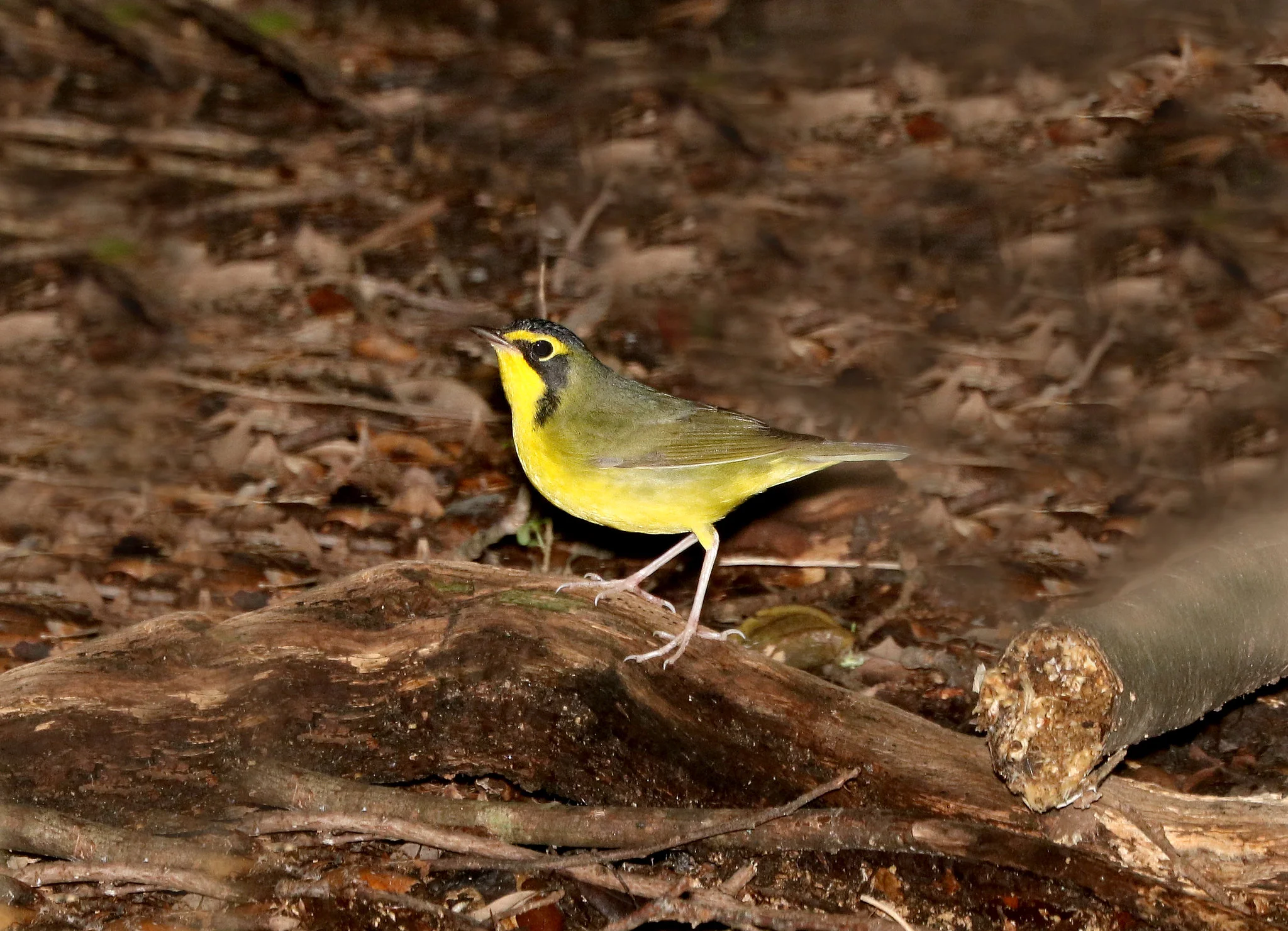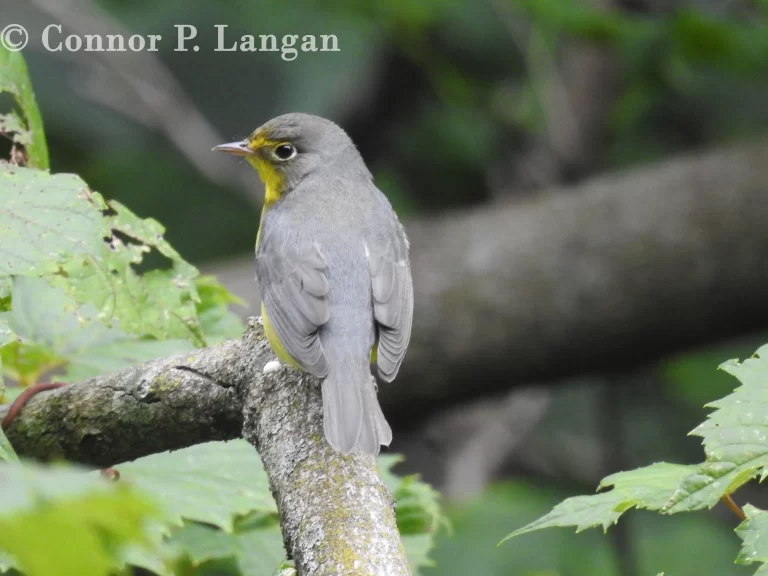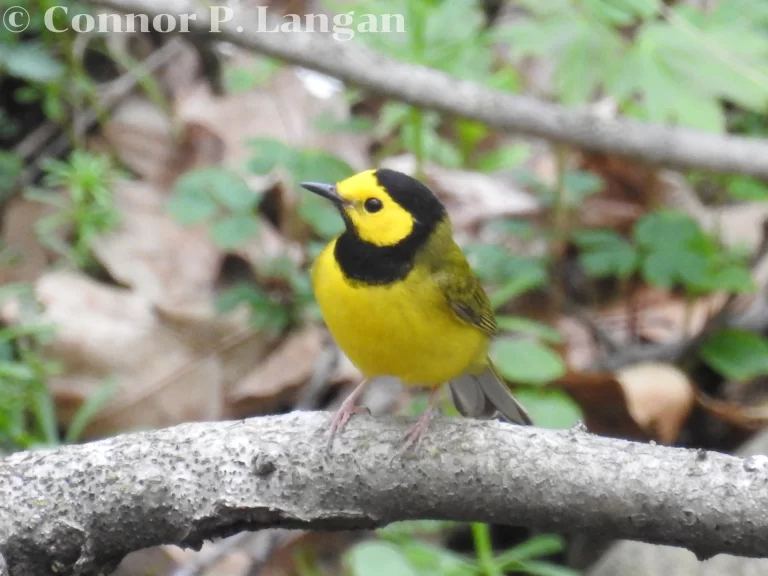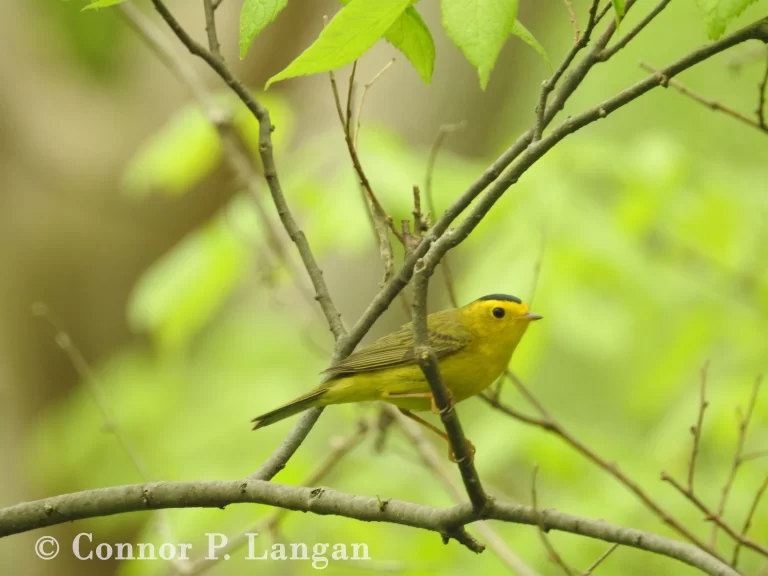Description
Kentucky Warblers are sizable, short-tailed warblers with long legs. These birds have fairly large beaks for a warbler.
Measuring over 5 inches long and weighing about 0.5 ounces, Kentucky Warblers are fairly large for a warbler.
Male Kentucky Warblers have yellow supercilia, throats, chests, stomachs, and undertail coverts. Males have green necks, backs, wings, and tails, while they have black caps and cheeks.
Female Kentucky Warblers look similar to males, though the dark markings on their faces are not as prominent. Many describe a female Kentucky Warbler’s cap and cheeks as gray rather than black.
Immature Kentucky Warblers are indistinguishable from females in the field.
Behavior
Both male and female Kentucky Warblers defend an established breeding territory from many other bird species. Kentucky Warblers are fairly secretive, as they perform many of their daily activities from the safety of shrubs and vegetation along the forest floor.
Diet
Kentucky Warblers forage primarily on insects, do they occasionally incorporate fruit into their diets. This species has been known to monitor swarms of ants on their wintering grounds and capture prey that is disturbed by the ants.
Habitat
Kentucky Warblers favor mature deciduous forests with a substantial understory for their breeding habitat. This species prefers large tracts of mostly undisturbed forest, but a habitat intersected by lightly traveled roads and trails will not deter these birds.
This species is primarily found in forested habitats during migration, but some birds may show up in parks and other areas with a fair amount of trees and shrubs. In the winter, Kentucky Warblers are found in rainforests or coffee or cacao plantations.
Range
Kentucky Warblers are found east of the Great Plains in the American Southeast, Midwest, and East Coast. This species is absent from the Northeast and most of the upper Midwest, but they have been slowly expanding their breeding range northward in the last few decades.
In the winter, Kentucky Warblers may be found in Mexico, the Caribbean, Central America, and northern South America.
Breeding
Kentucky Warblers are monogamous by nature, but these birds may mate with other Kentucky Warblers adjacent to their breeding territories.
Female Kentucky Warblers are responsible for all activities associated with the nest, as they choose the nest site and construct the nest without help from the male in the partnership. Nests are most often placed on the ground, but females may choose to construct a nest a few feet off the ground on rarer occasions.
Nests are tucked against shrubs or other plant species. The nests are cup-shaped and they have a foundation made of leaves. Females weave grasses and plant fibers together to form the cup shape. During uncommon instances, females may incorporate living plants around the nest into the nest.
Kentucky Warblers have 1 to 2 broods of young each year. Each clutch of eggs has 3 to 6 eggs, and it takes anywhere from 11 to 13 days for the young to hatch. The young grow rapidly and leave the nest under 10 days later.
Backyard Birding
Kentucky Warblers will not visit bird feeders or nest in birdhouses, but they may bathe in a birdbath that is near lots of cover.
If you have forested habitat with an understory of shrubs on your property, you may be able to witness this bird during migration.
Population Status
Kentucky Warblers have a population of close to 3 million birds, but their numbers have declined by over 35% in the last half-century. Deforestation on their breeding and wintering grounds is thought to be the biggest reason for their decline.
Kentucky Warbler Facts
- One study found that top-quality Kentucky Warbler males have more black coloration on their faces than lower-quality males.
- Kentucky Warblers are unlike most warbler species in that they only have one song type.




